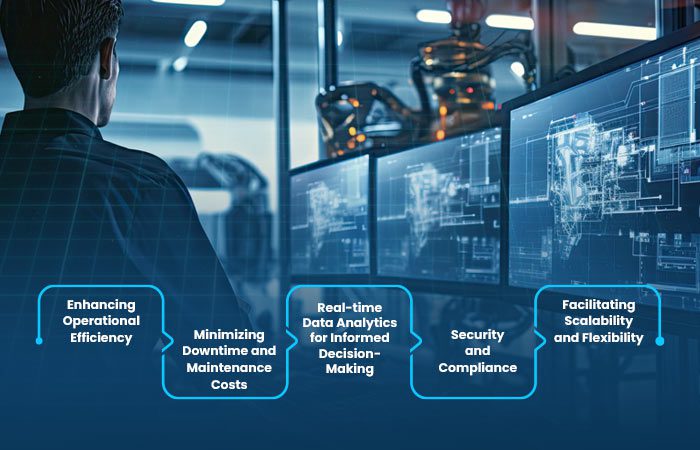
Revolutionizing Healthcare Infrastructure: The Transformative Role of Building Information Modeling (BIM)
In the realm of healthcare facility development, precision, efficiency, and innovation are paramount. As the demand for cutting-edge healthcare infrastructure continues to rise, the construction industry has found a powerful ally in Building Information Modeling (BIM). BIM is more than just a digital representation of a building; it’s a comprehensive approach that facilitates collaboration, enhances decision-making, and contributes to the seamless development of healthcare facilities. In this blog post, we’ll explore how BIM is revolutionizing the healthcare sector and driving the development of state-of-the-art medical facilities.
- Design Precision and Visualization
Healthcare facilities are intricate structures, requiring meticulous planning and execution. BIM empowers architects and designers to create precise 3D models that go beyond traditional 2D drawings. This three-dimensional representation provides stakeholders with a realistic visualization of the entire facility, allowing them to explore different design options and make informed decisions.
Through BIM, healthcare professionals, architects, and construction teams can collaborate seamlessly, ensuring that the design aligns with the specific needs of the medical staff and the intended functionality of the facility. This precision in design not only enhances the overall aesthetics of the healthcare facility but also optimizes the use of space, ensuring efficient workflows and patient care.
- Clash Detection and Risk Mitigation
The complexity of healthcare facilities often involves the integration of various systems, including electrical, plumbing, HVAC, and medical equipment. Traditionally, clashes or conflicts between these systems were often discovered during the construction phase, leading to costly rework and delays.
BIM, however, incorporates clash detection capabilities that allow project teams to identify and resolve conflicts in the virtual environment before construction begins. This proactive approach minimizes the risk of errors, ensures the seamless integration of different building systems, and ultimately reduces construction costs. By addressing potential clashes early in the design phase, healthcare facility developers can maintain project timelines and deliver a fully functional and interconnected facility.
- Lifecycle Management and Maintenance Optimization
The development of healthcare facilities extends beyond construction; it involves ongoing operations and maintenance. BIM serves as a valuable tool throughout the entire lifecycle of a healthcare facility. By incorporating detailed information about building components, equipment, and systems, BIM enables facility managers to streamline maintenance processes, optimize asset performance, and extend the lifespan of critical infrastructure.
With BIM, stakeholders can access a digital twin of the healthcare facility, providing comprehensive information about each component. This includes details such as manufacturer specifications, maintenance schedules, and replacement guidelines. This level of detail enhances facility management, ensuring that healthcare infrastructure remains operational, compliant, and efficient over the long term.
- Cost Estimation and Budget Control
Cost overruns are a common challenge in construction projects, and healthcare facilities are no exception. BIM supports accurate cost estimation by providing detailed information about materials, labor, and other project-related expenses. This allows project managers to create more precise budgets, reducing the likelihood of unexpected expenses during construction.
Moreover, BIM enables real-time tracking of project costs and progress, facilitating better budget control throughout the development process. This transparency empowers project stakeholders to make informed decisions, allocate resources efficiently, and minimize financial risks associated with healthcare facility development.
- Regulatory Compliance and Documentation
Healthcare facilities must adhere to stringent regulatory standards and codes to ensure patient safety and quality of care. Navigating the complex landscape of compliance requirements can be challenging, but BIM simplifies the process by providing a centralized platform for documentation and regulatory information.
By integrating regulatory data into the BIM model, healthcare facility developers can easily track and demonstrate compliance with building codes, health and safety regulations, and other industry standards. This not only streamlines the certification process but also enhances the overall quality and safety of healthcare infrastructure.
- Enhanced Collaboration and Communication
Effective communication and collaboration are fundamental to the success of healthcare facility development projects. BIM serves as a collaborative platform that brings together architects, engineers, contractors, and other stakeholders in a shared virtual environment. This collaborative approach fosters open communication, reduces misunderstandings, and promotes a more integrated workflow.
Through BIM, stakeholders can access a centralized database of project information, including design specifications, construction schedules, and progress updates. This real-time collaboration ensures that everyone involved in the project is on the same page, leading to more efficient decision-making and problem-solving.
Therefore, Building Information Modeling (BIM) is a transformative force in the development of healthcare facilities. From precision in design and clash detection to lifecycle management and enhanced collaboration, the benefits of BIM extend across every phase of healthcare facility development. As the demand for state-of-the-art healthcare infrastructure continues to grow, the integration of BIM will become increasingly indispensable, providing stakeholders with the tools and insights needed to create innovative, efficient, and compliant healthcare facilities. By embracing BIM, the healthcare industry is not just building structures; it’s laying the foundation for a new era of healthcare delivery, where precision meets innovation for the well-being of patients and healthcare professionals alike.

